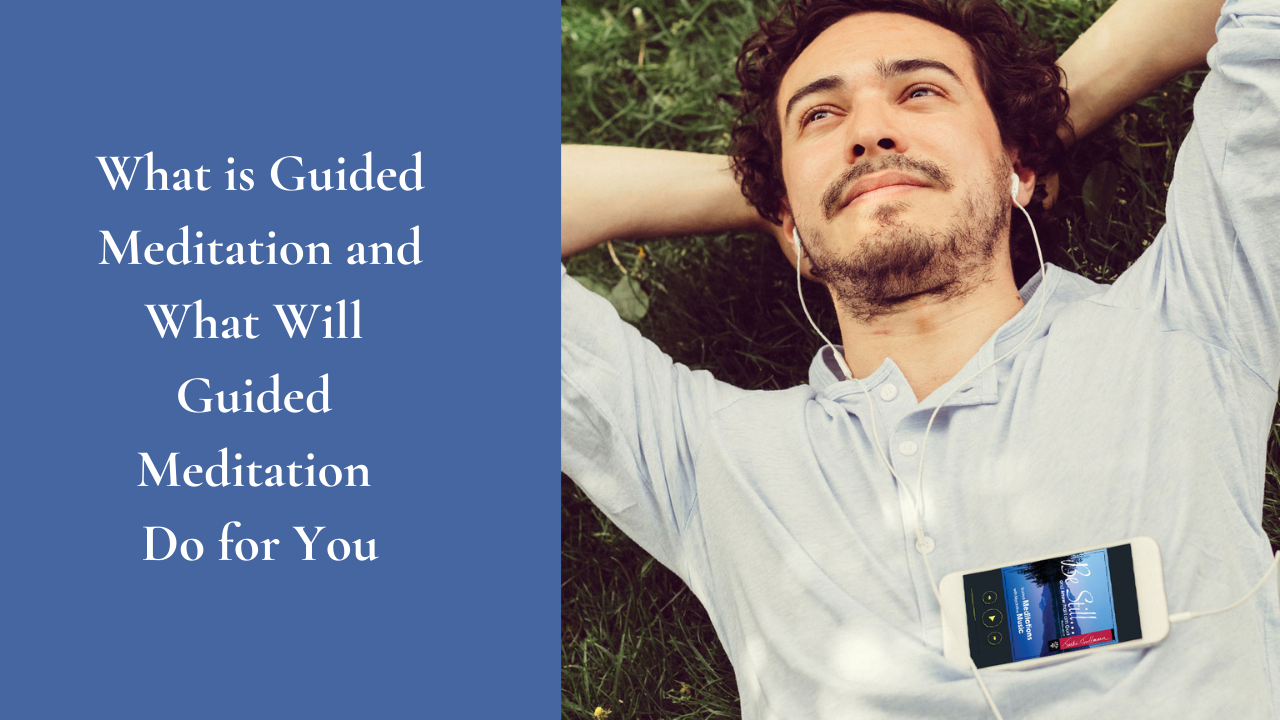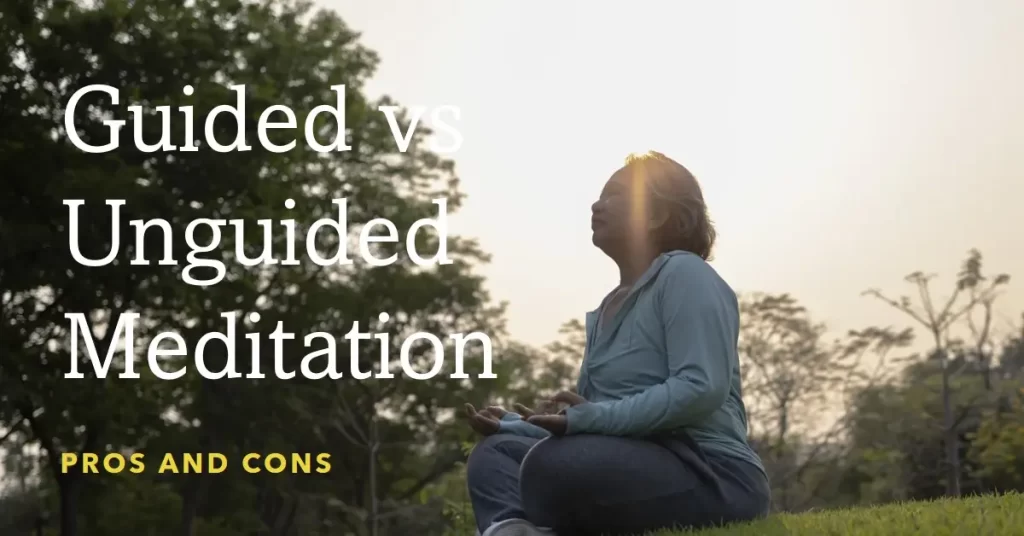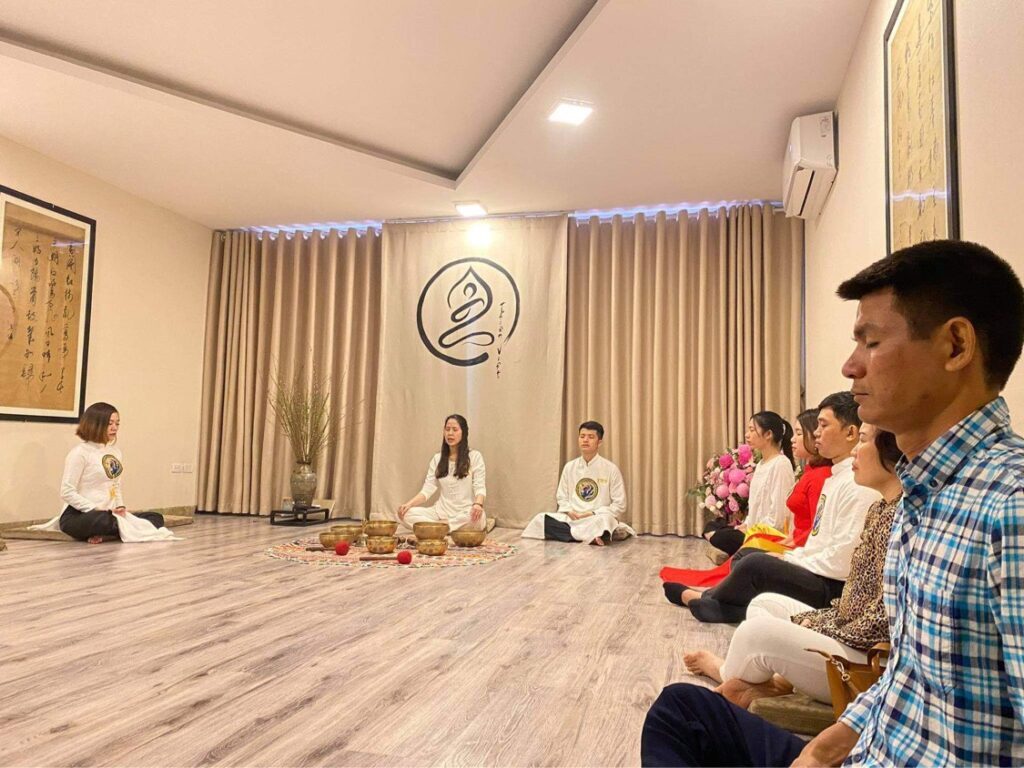Meditation, a practice rooted in ancient traditions, offers a pathway to inner peace and well-being. This comprehensive guide explores the nuances of guided and unguided meditation, equipping you with the knowledge to choose the approach that best aligns with your needs and aspirations. Understanding the distinct characteristics of each method is crucial in navigating this journey of self-discovery.
Whether you’re a seasoned practitioner seeking to deepen your practice or a newcomer to the world of meditation, this guide will provide a clear roadmap. From exploring the benefits and drawbacks of each style to practical techniques for integrating them into your daily routine, we’ll illuminate the path to a more mindful and fulfilling life.
Understanding Meditation Styles

Meditation, a practice encompassing various techniques, offers a pathway to cultivate inner peace and awareness. Different styles cater to diverse needs and preferences, each with unique characteristics and potential benefits. Understanding these distinctions can help individuals select a style that resonates with their personal goals.
Guided Meditation Definition
Guided meditation involves following the instructions of a teacher or a recorded voice. This structure provides a clear framework for the practice, leading the meditator through specific techniques, visualizations, or focused imagery. The guidance often includes prompts to focus on specific sensations, emotions, or thoughts.
Unguided Meditation Definition
Unguided meditation allows the individual to direct their own focus and experience without external direction. It necessitates a greater degree of self-awareness and self-discipline. The meditator is free to explore their inner world without pre-determined prompts or structures.
Structural Differences
Guided meditation offers a structured path, with specific instructions and visualizations. This structure can be particularly helpful for beginners or those seeking a more focused approach. Unguided meditation, conversely, encourages self-discovery and exploration, empowering the individual to navigate their internal landscape independently.
Types of Guided Meditation
Guided meditations encompass a variety of styles, each designed to achieve specific outcomes.
- Body Scan Meditation: This technique involves systematically bringing awareness to different parts of the body, noticing sensations without judgment. This can help reduce physical tension and promote relaxation.
- Loving-Kindness Meditation: This practice focuses on cultivating feelings of compassion and loving-kindness towards oneself and others. It often involves repeating phrases or visualizations that evoke feelings of warmth and generosity.
- Visualization Meditation: This style involves creating vivid mental images or scenarios. It can be used for stress reduction, goal setting, or promoting positive emotions.
Types of Unguided Meditation
Unguided meditation allows the individual to choose their focus.
- Mindfulness Meditation: This approach encourages awareness of present-moment experiences without judgment. It involves paying attention to thoughts, feelings, and sensations as they arise.
- Focused Attention Meditation: This style involves concentrating on a single point of focus, such as the breath, a mantra, or an object. This strengthens concentration and reduces distractions.
Mental States Induced
The mental states induced by each style can differ. Guided meditations often lead to a state of relaxation and calmness, as the individual follows specific instructions. Unguided meditations can induce a deeper state of self-awareness, as the meditator navigates their inner world independently. The experience varies significantly depending on the individual’s practice and commitment.
Comparison Table
| Style | Structure | Benefits | Examples |
|---|---|---|---|
| Guided Meditation | Structured, with clear instructions | Relaxation, focus, reduced stress | Body scan, loving-kindness, visualization |
| Unguided Meditation | Unstructured, self-directed | Self-awareness, deeper insight, improved concentration | Mindfulness, focused attention |
Benefits and Drawbacks of Each Style

Choosing between guided and unguided meditation often hinges on individual needs and experience levels. Understanding the nuances of each approach allows for a more informed decision, ultimately leading to a more fulfilling meditation practice. This section delves into the potential advantages and disadvantages of both styles, considering their suitability for different individuals and goals.
Benefits of Guided Meditation for Beginners
Guided meditation provides a structured framework for beginners. Clear instructions and soothing voices often help to ease into the practice, minimizing the feeling of being lost or overwhelmed. The clear guidance helps beginners focus on their breath, body sensations, and emotions in a supportive environment. This supportive environment fosters a sense of safety and encourages a smooth transition into the world of meditation.
For example, a guided meditation specifically designed for stress reduction might offer specific techniques for calming the mind and body.
Benefits of Unguided Meditation for Experienced Practitioners
Experienced practitioners often find unguided meditation to be a powerful tool for deepening their practice. The absence of external prompts allows for greater self-awareness and a deeper connection with inner processes. This self-reliance fosters a stronger sense of self-discovery, empowering individuals to explore and understand their internal landscape. A practitioner adept at unguided meditation can navigate complex emotions and thoughts with greater ease and clarity, allowing them to find unique insights.
They can tailor their practice to specific needs and develop an intuitive understanding of their own meditative state.
Drawbacks of Relying Solely on Guided Meditation
While guided meditation offers significant benefits for beginners, relying solely on it can hinder a deeper understanding of the meditative process. Over-reliance on external guidance can diminish the development of self-awareness and inner focus. The practitioner might become overly dependent on the guide, failing to cultivate the ability to independently direct their thoughts and feelings. This can lead to a plateau in their progress and an inability to apply the techniques in different situations.
Drawbacks of Unguided Meditation for Beginners
Unguided meditation can be challenging for beginners. The lack of structure can lead to distraction and a sense of being lost. Without clear direction, beginners might struggle to maintain focus, leading to frustration and discouragement. It is crucial for beginners to understand that unguided meditation demands a certain level of self-discipline and experience. The lack of guidance can feel overwhelming, potentially causing the beginner to give up.
Role of Personal Preference in Choosing a Meditation Style
Personal preference plays a vital role in selecting a meditation style. Some individuals thrive in the structured environment of guided meditation, while others prefer the freedom and autonomy of unguided meditation. Ultimately, the most effective style is the one that resonates most with the individual. Experimentation and exploration are key to determining which style best suits individual needs.
Learning Curve for Each Style
The learning curve for guided meditation is generally gentler for beginners. The clear instructions and soothing voices can provide a smooth transition into the practice. Unguided meditation, on the other hand, often demands a greater level of self-discipline and self-awareness. The learning curve is steeper, but the rewards can be significant for experienced practitioners.
Benefits and Drawbacks for Different Meditation Goals
The choice between guided and unguided meditation also depends on the specific meditation goal. For beginners aiming for stress reduction, guided meditations can be highly effective. For experienced practitioners seeking deeper self-discovery, unguided meditation may be more suitable.
| Meditation Goal | Guided Meditation | Unguided Meditation |
|---|---|---|
| Stress Reduction | High Benefit: Structured approach aids relaxation; Low Drawback: Potential over-reliance on external guidance. | Medium Benefit: Requires self-discipline; Medium Drawback: Potential for distraction for beginners. |
| Sleep Improvement | High Benefit: Calming nature promotes relaxation; Low Drawback: Potential dependence on external guidance. | Medium Benefit: Fosters self-regulation; Medium Drawback: Beginners may find it difficult to maintain focus. |
| Focus Enhancement | Medium Benefit: Clear instructions support concentration; Medium Drawback: Over-reliance can hinder independent focus development. | High Benefit: Promotes self-directed focus; Low Drawback: Beginners may struggle with sustained focus. |
Practical Application and Techniques

Selecting the right meditation style is crucial for maximizing its benefits. This section details how to choose between guided and unguided meditation, develop a personal practice, and incorporate music and sounds. It also offers a practical guide for beginners.Understanding your individual needs and preferences is key to finding a meditation style that resonates with you. This understanding allows you to tailor your practice to achieve your specific goals.
Effective techniques are also presented for incorporating music and sound, as well as resources to assist in your meditation journey.
Selecting a Guided Meditation Based on Individual Needs
Guided meditations offer structure and support, making them ideal for beginners or those seeking specific benefits. Consider your current emotional state, available time, and desired outcome when selecting a guided meditation. For example, if you are experiencing stress, a guided meditation focusing on relaxation and calming techniques might be beneficial. If you’re looking to improve focus, a guided meditation designed for concentration could be more suitable.
Developing a Personal Unguided Meditation Practice
Developing a personal unguided meditation practice fosters self-reliance and deepens your connection with your inner self. Start with a comfortable posture, focusing on your breath. Gradually, expand your awareness to encompass your body, thoughts, and emotions. As your practice progresses, you can experiment with different techniques like body scans, mindful walking, or loving-kindness meditations.
Incorporating Music and Sounds into a Guided Meditation Practice
Music and sounds can enhance the meditative experience. Choose music that evokes a sense of peace and calm, avoiding anything distracting or stimulating. Soft instrumental music, nature sounds, or even chanting can create a tranquil atmosphere. Ensure the volume is appropriate to maintain focus without disturbing your surroundings.
Choosing Appropriate Music for Guided Meditation
Selecting suitable music is essential for a positive meditation experience. Consider the mood and focus of the meditation when making your selection. Music with a slow tempo and calming melodies is often preferred. Avoid music with lyrics or strong rhythms, as these can be distracting. Experiment with different types of instrumental music to discover what works best for you.
Step-by-Step Guide for Beginners on Choosing Between Guided and Unguided Meditation
- Identify your meditation goals. What do you hope to achieve through meditation?
- Assess your experience level. Are you a beginner, intermediate, or experienced meditator?
- Consider your available time. How much time can you dedicate to meditation each day?
- Explore both guided and unguided options. Listen to samples of guided meditations and try unguided practices to feel the difference.
- Begin with guided meditation for support, then gradually transition to unguided practices as your confidence grows.
- Experiment with different styles and techniques to discover what resonates most with you.
Resources for Finding Guided and Unguided Meditations
Numerous apps and websites offer a vast selection of guided and unguided meditations. Some popular resources include Calm, Headspace, Insight Timer, and YouTube. Research these and other options to find the best fit for your needs.
Examples of Guided and Unguided Meditation Practices
| Guided Meditation Practice | Corresponding Unguided Meditation Exercise |
|---|---|
| Mindful Body Scan | Self-Awareness Breathwork |
| Stress Reduction | Mindful Walking |
| Focus Enhancement | Concentration Meditation |
| Emotional Regulation | Loving-Kindness Meditation |
Choosing the Right Style for You

Selecting the appropriate meditation style is a crucial step toward a fulfilling and effective practice. Consider your individual needs, preferences, and goals when deciding between guided and unguided meditation. Understanding the nuances of each approach will empower you to cultivate a personal practice that resonates with your unique journey.A well-chosen meditation style can significantly impact your experience. It can transform a potentially challenging practice into a source of profound relaxation and mental clarity.
This section will guide you through the key factors to consider, ensuring your meditation journey is tailored to your specific needs.
Identifying Factors for Choosing a Style
Understanding your personal preferences and experience level is essential when selecting a meditation style. Consider your learning style, prior experience with mindfulness practices, and the level of structure you find beneficial. Individuals with limited experience often find guided meditations more helpful in developing foundational techniques and maintaining focus. Those with a strong foundation in mindfulness might find unguided meditation more engaging and empowering, allowing for greater self-discovery and personalization.
Evaluating the Quality of a Guided Meditation
The quality of a guided meditation significantly influences the experience. Seek out recordings or sessions from reputable instructors or organizations with proven expertise in mindfulness practices. Pay close attention to the instructor’s tone, clarity, and guidance. Ensure the language is conducive to relaxation and the pacing is suitable for your needs. Avoid guided meditations with fast-paced or overwhelming language that may impede focus or create unnecessary stress.
Creating a Suitable Meditation Environment
A conducive environment is essential for successful meditation. A quiet, comfortable space free from distractions is ideal. Consider the following factors when designing your meditation sanctuary:
- Soundproofing: Minimizing external noise, whether from traffic, conversations, or appliances, is crucial for maintaining focus. This can involve using earplugs, white noise machines, or simply selecting a room in your home that offers a degree of sound insulation.
- Temperature Control: Maintaining a comfortable room temperature is essential. Avoid extreme temperatures that might disrupt your concentration.
- Lighting: Dim, soft lighting is ideal. Bright lights can be distracting and make it more challenging to relax.
- Comfort: Choose a comfortable seating position. A cushion or chair that supports your posture without discomfort will help you maintain focus.
Examples of Different Meditation Environments
Various environments can foster a meditative state. A quiet corner in your home, a secluded garden, or a designated meditation room in a center can all serve as suitable spaces. The key is to find a place that promotes tranquility and fosters a sense of calm. For example, a garden with soft natural sounds, like birds chirping, can create a peaceful environment for meditation.
Creating a Personalized Meditation Practice
Integrating both guided and unguided meditation into your practice can create a rich and diverse experience. Start with guided meditations to establish basic techniques and gradually transition to unguided practices as your skills and confidence grow. This approach allows you to build a personalized practice that caters to your specific needs and preferences.
Transitioning from Guided to Unguided Meditation
Transitioning from guided to unguided meditation involves gradually increasing the duration of unguided sessions. Begin by incorporating short periods of unguided meditation within a guided practice. This helps you acclimate to focusing on your breath and internal sensations without external cues. Gradually increase the duration of unguided sessions as your focus improves.
Tips for Sustaining a Meditation Practice
Consistent practice is key to reaping the benefits of meditation. Scheduling regular sessions, ideally at the same time each day, can create a routine that facilitates integration into your daily life. Be patient with yourself, and remember that progress is gradual. Regular practice will lead to greater ease and clarity in your daily activities.
Meditation Styles and Corresponding Benefits/Challenges
| Meditation Style | Benefits (General) | Challenges (General) | Benefits/Challenges for Specific Personalities/Lifestyles |
|---|---|---|---|
| Guided Meditation | Structured guidance aids focus; suitable for beginners. | Reliance on external cues; may not promote independent focus. | Introverts may find the structure supportive; extroverts may find it restrictive. Busy professionals may find the structured approach helpful in maintaining focus during hectic schedules. |
| Unguided Meditation | Develops self-reliance; fosters deep self-awareness. | Requires significant self-discipline; may be challenging for beginners. | Introverts may enjoy the independent nature; extroverts may find it challenging to remain focused without external cues. Individuals with high levels of anxiety might find unguided meditation overwhelming. |
Advanced Considerations
Delving deeper into the practice of meditation reveals nuanced aspects that extend beyond basic techniques. Understanding the role of intention, mindfulness, and creative integration of various elements significantly enhances the meditative experience. This section explores these sophisticated considerations for both guided and unguided approaches.Intention, a crucial element in both guided and unguided meditation, shapes the focus and outcome of the practice.
A clear intention, whether to reduce stress, cultivate compassion, or deepen self-awareness, provides direction and purpose. A well-defined intention can significantly amplify the benefits of the meditation.
The Role of Intention in Meditation
Intention serves as a compass, guiding the practitioner toward a specific outcome. In guided meditations, the instructor’s words often align with the intended outcome, making it easier to focus. In unguided meditations, the practitioner’s conscious intention acts as the focal point, allowing for a more personalized and tailored experience. Clarity of intention enhances the effectiveness of both styles.
The Importance of Mindfulness
Mindfulness, a cornerstone of both guided and unguided meditation, involves present-moment awareness. It requires the ability to observe thoughts, feelings, and sensations without judgment. This non-judgmental observation fosters a deeper understanding of the self. In guided meditations, the instructor often prompts mindful awareness through specific prompts and techniques. In unguided meditations, practitioners cultivate mindfulness by intentionally focusing on their breath, body sensations, or surrounding environment.
Integrating Guided Imagery into Unguided Meditations
Guided imagery, a technique frequently employed in guided meditations, can also be incorporated into unguided practices. Practitioners can use mental images to evoke specific emotions, memories, or scenarios, thereby enhancing the meditative experience. For example, visualizing a tranquil forest or a serene beach can promote relaxation and reduce stress.
Incorporating Nature Sounds into Unguided Meditations
Nature sounds, such as flowing water or birdsong, can create a conducive environment for unguided meditation. These sounds can serve as gentle anchors, drawing the practitioner’s attention back to the present moment when thoughts wander. For instance, a practitioner might listen to recordings of ocean waves while meditating, allowing the sound to guide their focus.
Visualization Techniques in Meditation
Visualization, a technique used in both guided and unguided meditation, involves creating mental images to achieve specific goals. In guided meditations, the instructor provides detailed visualizations. In unguided meditations, the practitioner can visualize calming scenes or positive affirmations. Both styles can leverage visualization to enhance the experience.
Examples of Advanced Guided Meditation Techniques
Advanced guided meditations often incorporate elements like progressive muscle relaxation, loving-kindness meditations, and visualization techniques to promote deeper states of awareness and emotional regulation. These techniques help practitioners explore and understand their inner world. For example, a guided meditation might incorporate progressive muscle relaxation to reduce physical tension.
Examples of Advanced Guided Meditation Techniques
Advanced guided meditations often incorporate elements like progressive muscle relaxation, loving-kindness meditations, and visualization techniques to promote deeper states of awareness and emotional regulation. These techniques help practitioners explore and understand their inner world. For example, a guided meditation might incorporate progressive muscle relaxation to reduce physical tension.
“Meditation is not about escaping life, but about discovering the life within.”Unknown
Outcome Summary

In conclusion, the choice between guided and unguided meditation ultimately hinges on individual preferences, experience levels, and desired outcomes. This guide has provided a framework for evaluating both approaches, empowering you to make an informed decision. Whether you opt for the structured guidance of a guided meditation or the self-directed exploration of unguided practice, remember that the key to success lies in consistent practice and a commitment to your personal journey.
The journey of self-discovery through meditation awaits.